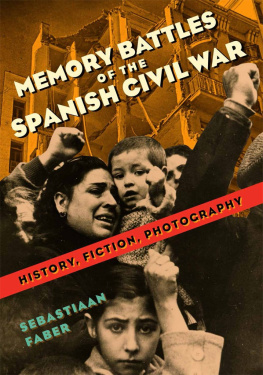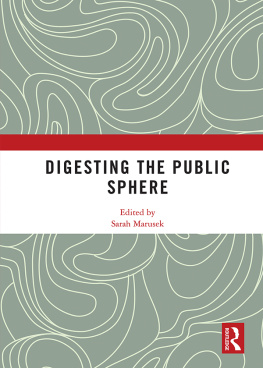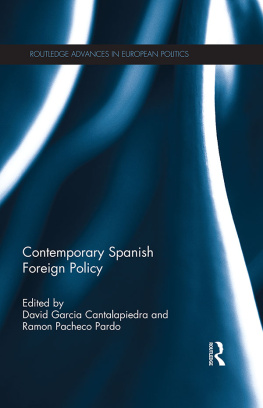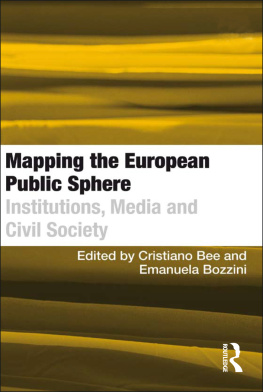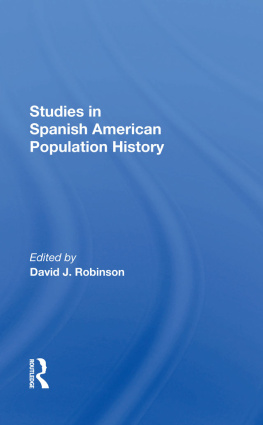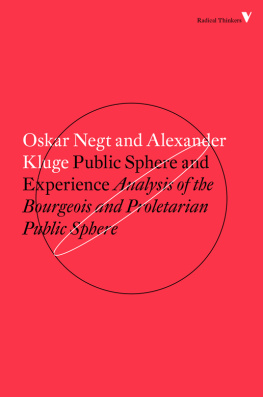THE CONFIGURATION OF THE SPANISH PUBLIC SPHEREStudies in Latin American and Spanish History
Series Editors:
Scott Eastman, Creighton University, USA
Vicente Sanz Rozaln, Universitat Jaume I, Spain
Editorial Board:
Carlos Illades, Universidad Autnoma Metropolitana, Mexico
Mercedes Yusta, Universit Paris 8, France
Xos Manoel Nez-Seixas, Ludwig-Maximilians Mnchen Universitt, Germany
Dominique Soucy, Universit de Franche-Comt, France
Gabe Paquette, Johns Hopkins University, USA
Karen Racine, University of Guelph, Canada
David Sartorius, University of Maryland, USA
Claudia Guarisco, El Colegio Mexiquense, Mexico
Natalia Sobrevilla Perea, University of Kent, United Kingdom
This series bridges the divide between studies of Latin America and peninsular Spain by employing transnational and comparative approaches that shed light on the complex societies, cultures, and economies of the modern age. Focusing on the cross-pollination that was the legacy of colonialism on both sides of the Atlantic, these monographs and collections explore a variety of issues such as race, class, gender, and politics in the Spanish-speaking world.
Volume 5
The Configuration of the Spanish Public Sphere: From the Enlightenment to the Indignados
Edited by David Jimnez Torres and Leticia Villamediana Gonzlez
Volume 4
The Brazilian Truth Commission: Local, National and Global Perspectives
Edited by Nina Schneider
Volume 3
Jos Antonio Primo De Rivera: The Reality and Myth of a Spanish Fascist Leader
Joan Maria Thoms
Volume 2
Conflict, Domination, and Violence: Episodes in Mexican Social History
Carlos Illades
Volume 1
Metaphors of Spain: Representations of Spanish National Identity in the Twentieth Century
Edited by Javier Moreno Luzn and Xos M. Nez Seixas
The Configuration of the Spanish Public Sphere
From the Enlightenment to the Indignados
Edited by
David Jimnez Torres and
Leticia Villamediana Gonzlez
First published in 2019 by
Berghahn Books
www.berghahnbooks.com
2019 David Jimnez Torres and Leticia Villamediana Gonzlez
All rights reserved. Except for the quotation of short passages
for the purposes of criticism and review, no part of this book
may be reproduced in any form or by any means, electronic or
mechanical, including photocopying, recording, or any information
storage and retrieval system now known or to be invented,
without written permission of the publisher.
Library of Congress Cataloging-in-Publication Data
Names: Jimnez Torres, David, 1986- editor. | Villamediana Gonzlez, Leticia, editor.
Title: The configuration of the Spanish public sphere : from the Enlightenment to the indignados / edited by David Jimnez Torres and Leticia Villamediana Gonzlez.
Description: New York : Berghahn Books, 2019. | Series: Studies in Latin American and Spanish history ; volume 5 | Includes bibliographical references and index.
Identifiers: LCCN 2019007905 (print) | LCCN 2019011825 (ebook) | ISBN 9781789202366 (ebook) | ISBN 9781789202359 (hardback : alk. paper)
Subjects: LCSH: Political participation--Spain--History. | Social participation--Spain--History. | Public opinion--Spain--History. | Communication in politics--Spain--History. | Mass media--Political aspects--Spain--History. | Political culture--Spain--History. | Spain--Politics and government. | Spain--Social conditions.
Classification: LCC JN8341 (ebook) | LCC JN8341 .C656 2019 (print) | DDC 323/.0420946--dc23
LC record available at https://lccn.loc.gov/2019007905
British Library Cataloguing in Publication Data
A catalogue record for this book is available from the British Library
ISBN 978-1-78920-235-9 hardback
ISBN 978-1-78920-236-6 ebook
Contents
David Jimnez Torres and Leticia Villamediana Gonzlez
Sally-Ann Kitts
Noelia Garca Daz
Mnica Bolufer Peruga
Francisco A. Eissa-Barroso
Richard Meyer Forsting
Andrew Ginger
Alba Gonzlez Sanz
Stephen G.H. Roberts
Marta Garca Carrin
Francisco Sevillano
Daniel Mourenza
Federico Lpez-Terra
Georgina Blakeley
Leticia Villamediana Gonzlez and David Jimnez Torres
Illustrations
Figures
.
.
.
.
.
.
.
.
.
.
.
.
.
.
Table
.
Introduction
A Spanish Public Sphere?
David Jimnez Torres and Leticia Villamediana Gonzlez
Public opinion has been circulating for many days and even years without a real meaning, it having proved impossible until today to fix one... everyone has understood it in their own way and according to how it may benefit their particular interests and opinions.
La Abeja espaola, 1813
What is the public sphere and how has it operated in Spain from the Enlightenment to the present day? These are the two core questions that drive the focus of this book and of its individual chapters. They are also two questions that are clearly interrelated. How we conceptualise such an ambiguous and multifaceted phenomenon as the public sphere will determine how we chart its presence and historical evolution in the Spanish case. And tracing this presence and evolution will, in turn, throw up empirical data that will help us refine our understanding of the public sphere at a transnational level. Our aim in this introduction is to flesh out the approach that this book takes towards both these issues, and what value this approach has in furthering our understanding of them. Here we will also expand into a number of issues that make the Spanish case interesting to debates over the nature of the public sphere, before foregrounding the content of the rest of the volume.
It is worth pointing out that Spain has a peculiar relationship with the idea of the public sphere. When the German philosopher Jrgen Habermas developed his formulation of this concept, he did so by analysing the historical evolution of three European nations (Great Britain, France and Germany) as well as an American one (the United States). It was there that Habermas observed the rise of the coffee houses, the early periodical press and other forms of communication and sociability that he saw as crucial in the configuration of a bourgeois public sphere. Thus, the most influential account of what the public sphere was (or, more accurately, was meant to be) and how it came about during the eighteenth and nineteenth centuries left Spain out of its empirical framework. When discussing the rise of the bourgeois public sphere, then, leading scholars did not see Spain as an important point of reference. For instance, while Barker and Burrows


